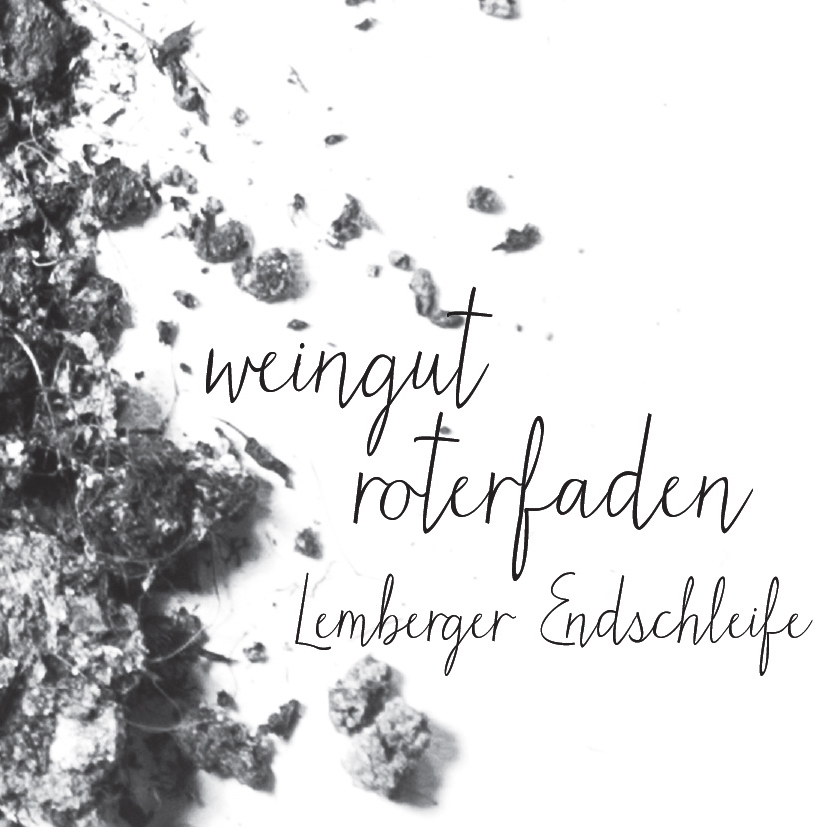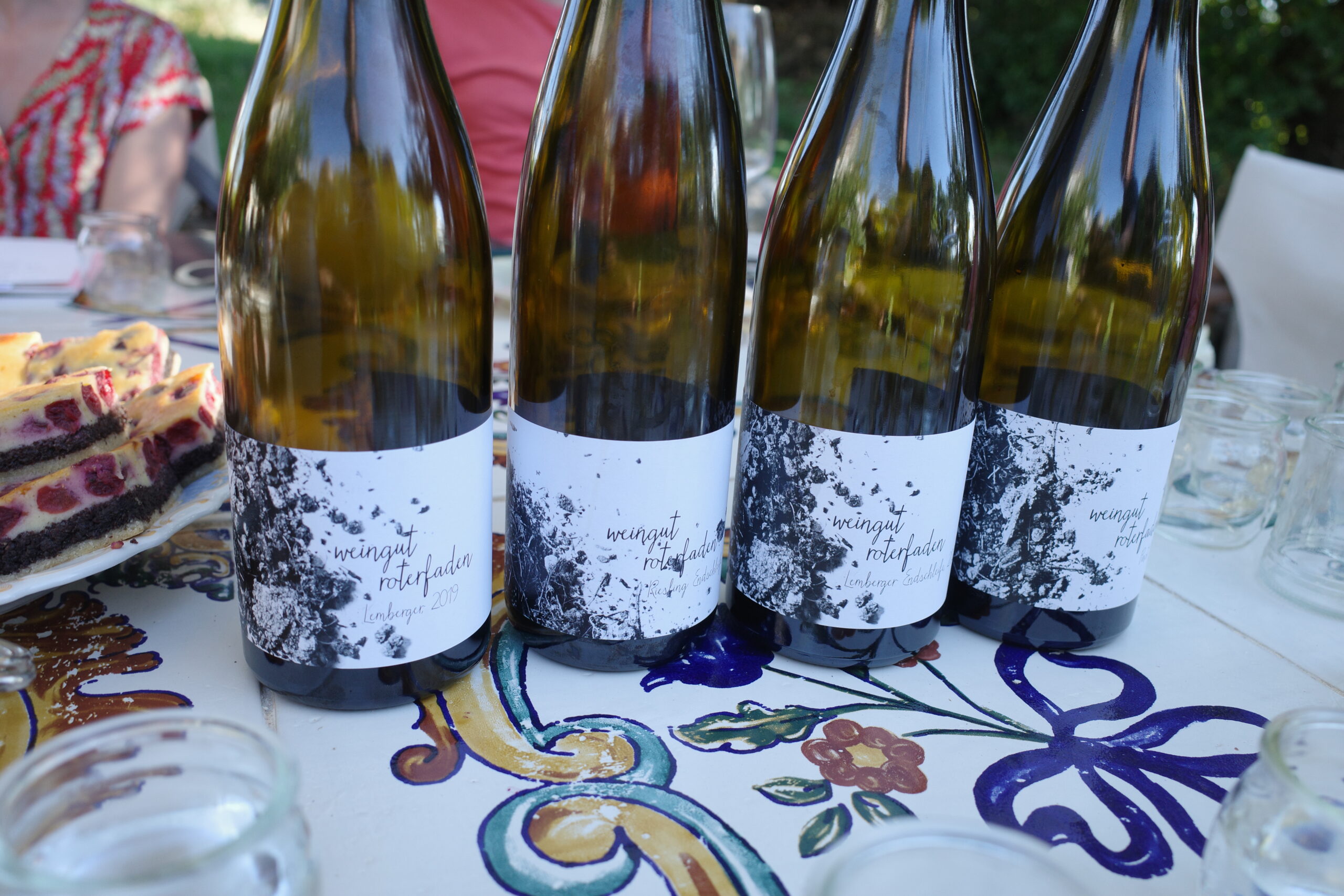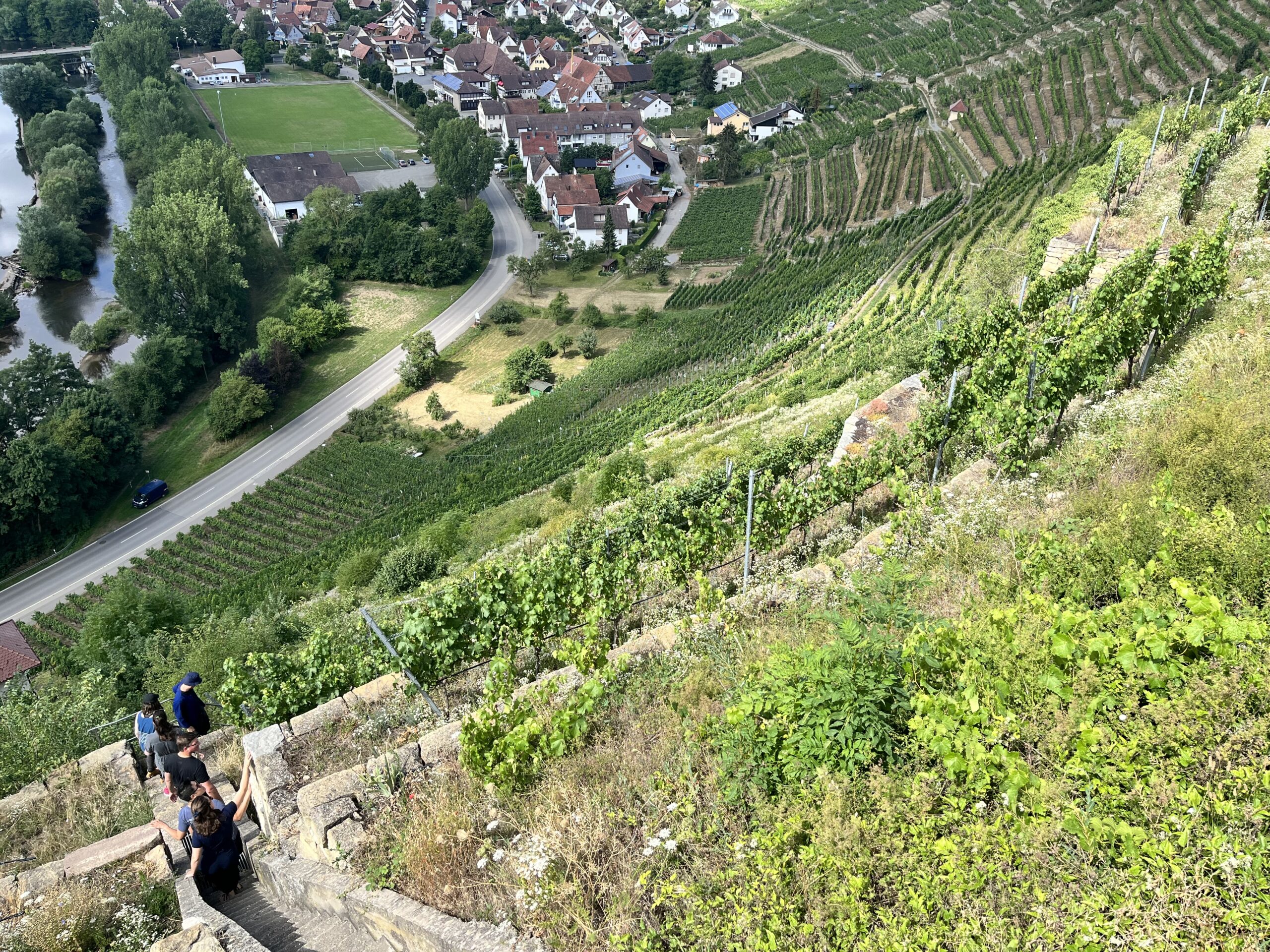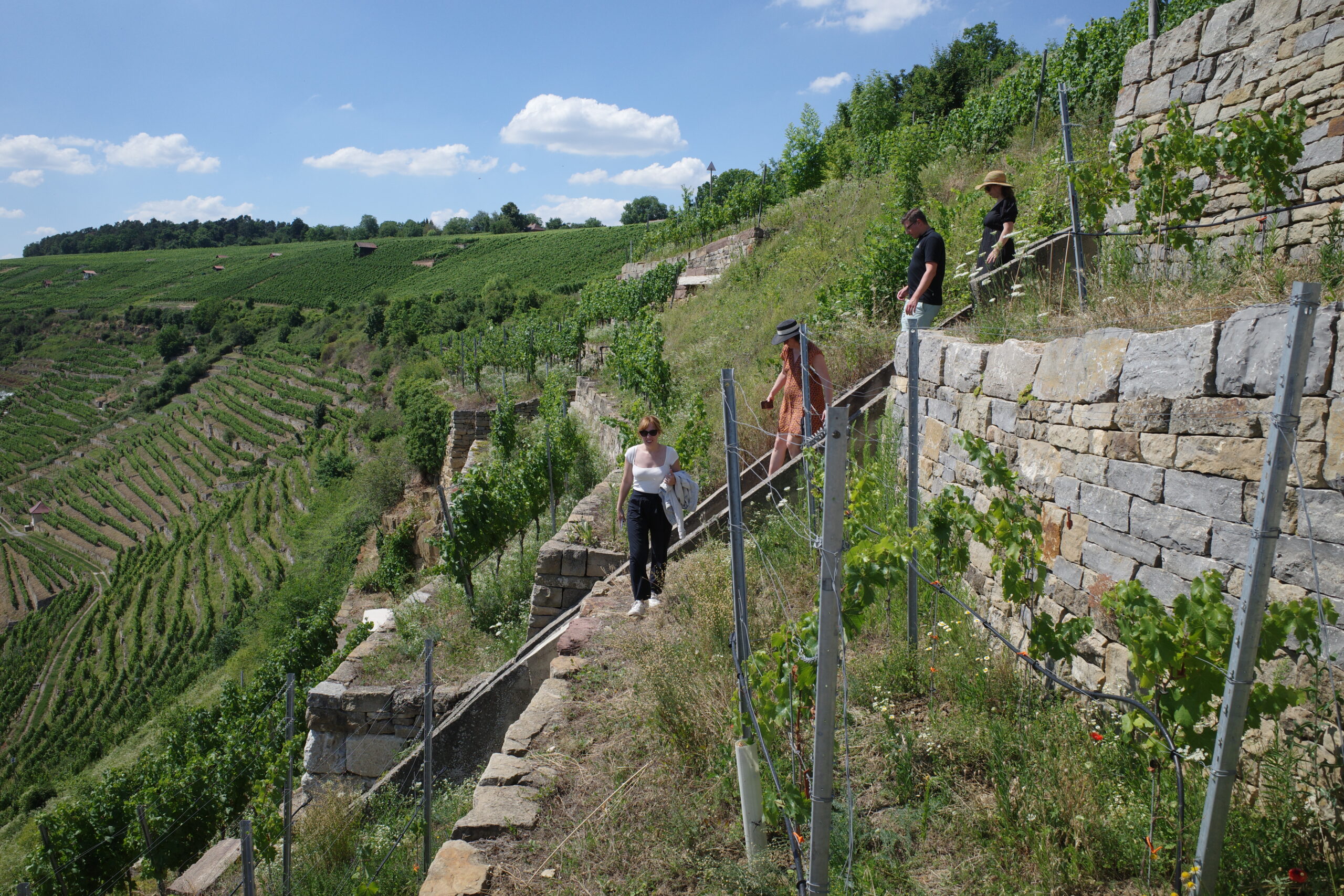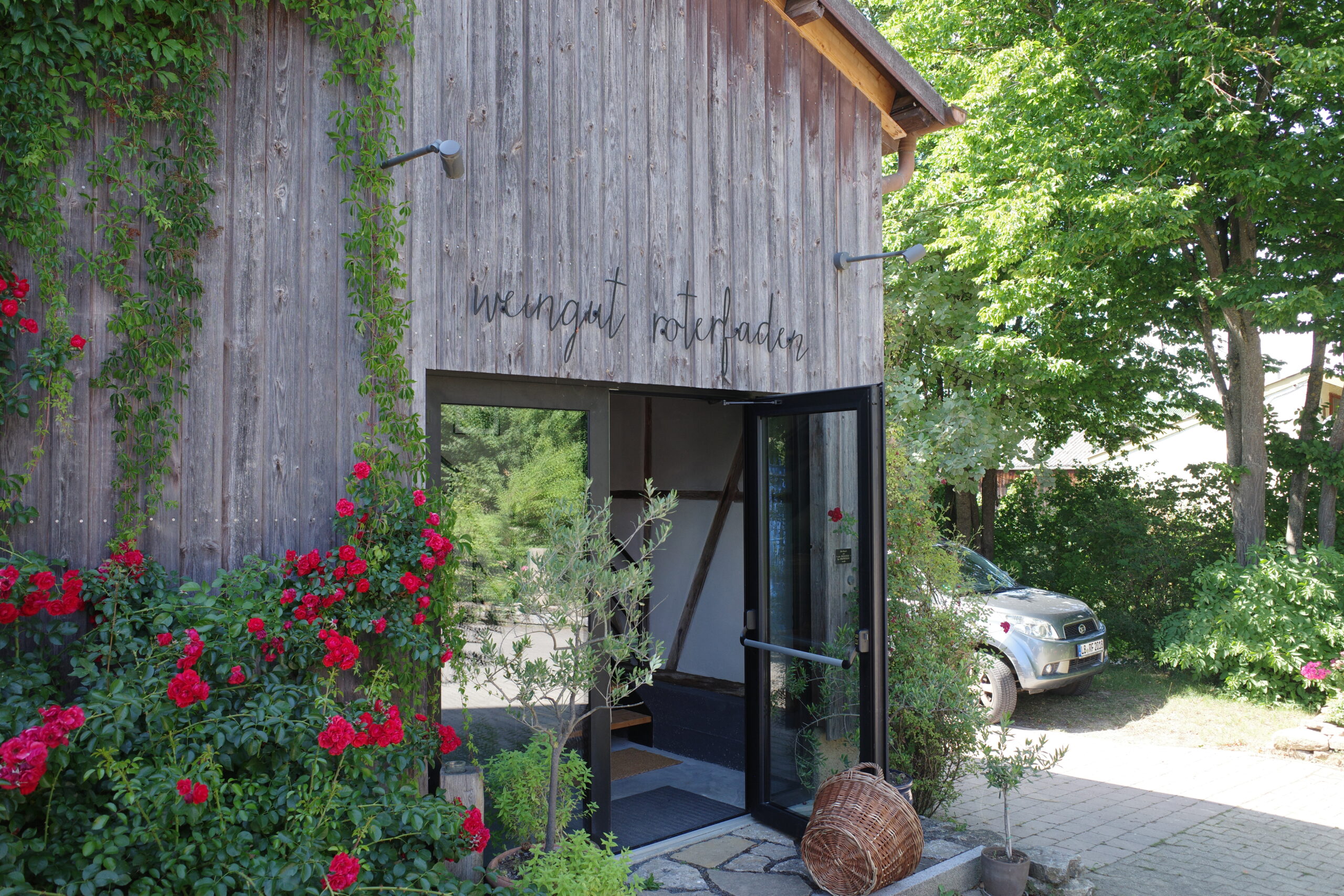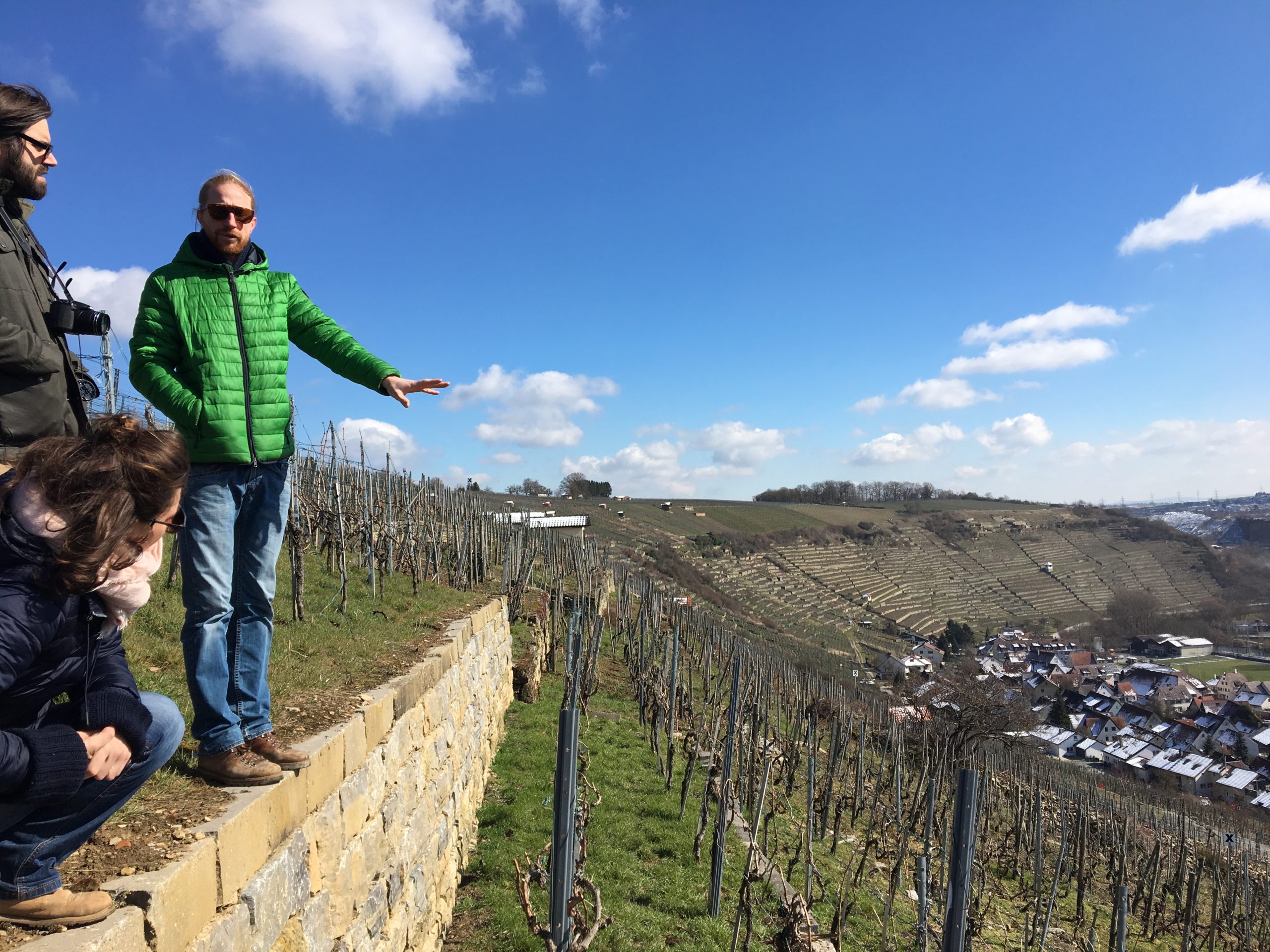“Vine advocates.” That’s what Olympia and Hannes are, that’s what Roterfaden is.
About an hour northwest of Stuttgart, in the exact opposite direction of the “famous” Swabian wine regions (you know where those are, right?), a river called the Enz does that meandering thing rivers do, creating two of the most dramatic amphitheaters of vines and terraces I’ve ever seen, at least outside of the Mosel.
Now, if Swabia is misunderstood, this northern haunt is beyond misunderstood. I’d write that this village of Rosswag was “forgotten,” but I can’t find any literature suggesting it’s ever really registered on the wine map to begin with, which is startling if for no other reason than the in-your-face beauty and drama of this place.
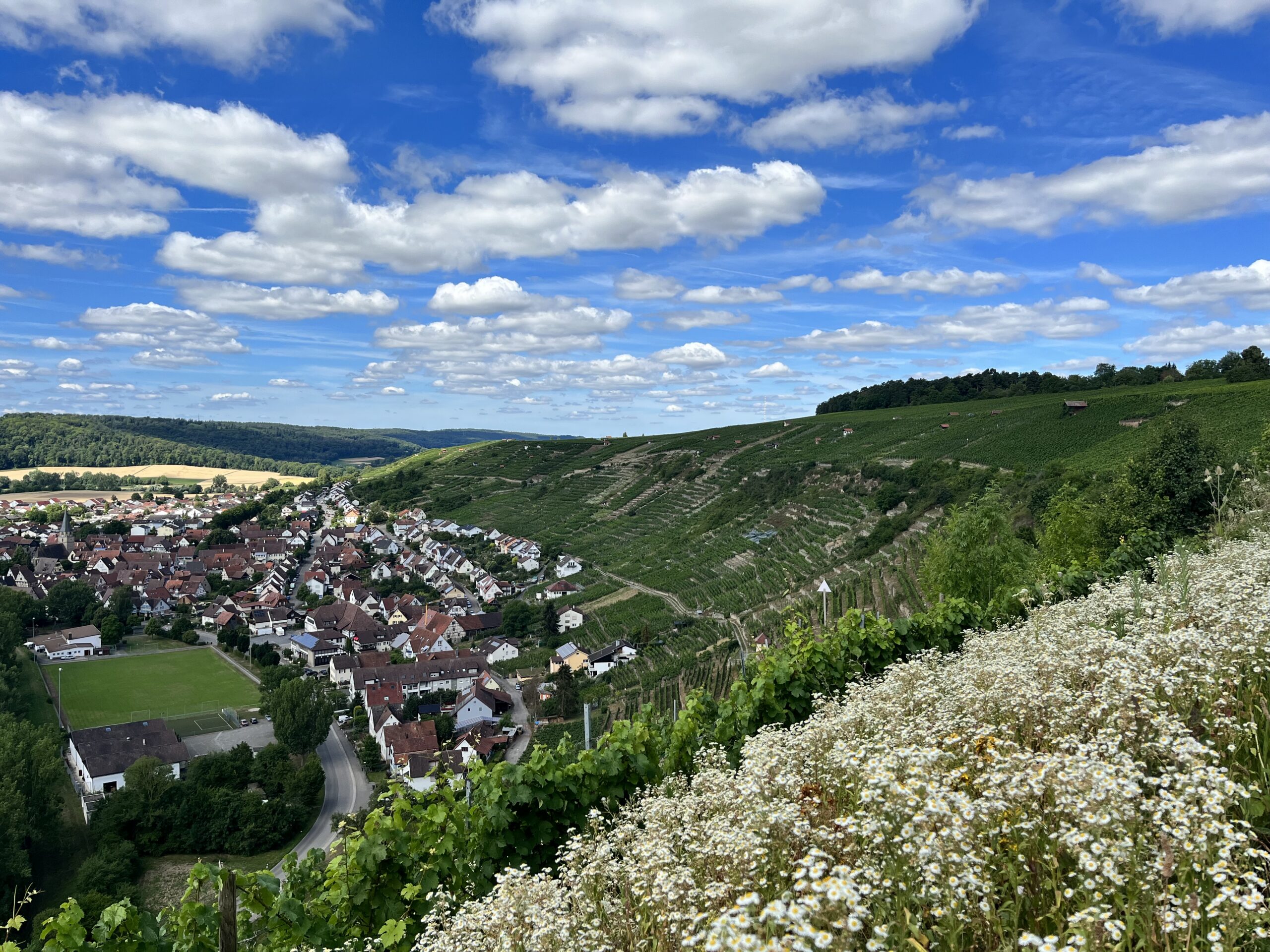 Lemberger is king here (Blaufränkisch is what it’s called in Austria, where it’s more common); old-vine Lemberger planted for decades (centuries?) on shell limestone at about 1,000 feet above sea level. We can presume that for decades (centuries?) the wine made here was good, solid; the kind of gutsy wine that would stand up to hearty fare, calorie-rich cuisine for the villagers who worked these steep terraces.
Lemberger is king here (Blaufränkisch is what it’s called in Austria, where it’s more common); old-vine Lemberger planted for decades (centuries?) on shell limestone at about 1,000 feet above sea level. We can presume that for decades (centuries?) the wine made here was good, solid; the kind of gutsy wine that would stand up to hearty fare, calorie-rich cuisine for the villagers who worked these steep terraces.
And many villagers still do; nearly everyone here has at least a few rows of vines, though most are what we’d call “hobby farmers,” people who love their vines but don’t have that much time for them. In this town, the coop has stepped in and created something like that idealistic thing we want a coop to be. A place where, “together,” people pool resources and get the things done they couldn’t do alone.
For the most part, it’s good. And here in Rosswag, roughly 99% of the fruit from the vineyards goes to the coop for the humble village wines.
Olympia and Hannes, Roterfaden, well… they are the other 1%. Literally.
Hannes was born here in Rosswag. His family has a farm; they’ve tended vines, had cereal fields and raised cattle. Hannes, though, liked the vines. He studied in Geisenheim and there met Olympia, a Greek girl who had come to Germany to study viticulture and winemaking.
They became a thing and then proceeded to travel the world, looking for the perfect place to start a small winery. A place where they both could work in the vineyards, work together in the cellars, spend time in their own garden. The human-scaled dream I believe we should all focus on.
They traveled the world; Olympia worked in Burgenland, Napa, Naousa and Santorini. Hannes worked in Carnuntum, Mallorca, South Africa and Sonoma. And all this globe trotting helped them realize that they had everything right in front of them, in the dramatic, terraced, old-vine vineyards of Rosswag.
They started Roterfaden in 2014, with half a hectare of Lemberger from a parcel planted by Hannes’ grandfather. They have now grown to about four hectares and farm a little bit of Pinot Noir and Riesling along with the Lemberger.
Old vines and, well, freedom – that’s what they have here. There really isn’t any preconceived notion of what wine from Rosswag, from this northerly region, should be. This means Hannes and Olympia are free to work exactly as they want to work.
And how do they work? Quietly, thoroughly, in a manner that looks so fluid and natural that you almost don’t notice how considered it all is; how every step has been thought out and executed in the perfect manner. Yes, they are working organic; they incorporate many tenants of biodynamics, making their own teas and extracts. Everything is done by hand; the vineyards are beautiful, stunning even. I don’t know how else to describe it. The cellar is minimalistic, scarcely larger than your average mechanics garage (though their cellar is a converted barn from Hannes’ family’s farm) – a few steel tanks, but mostly wooden barrels of various sizes lined up. Fermentations are all natural; the wines are bottled unfined and unfiltered with lower levels of sulfur.
Already, only a few years into their work, the very serious potential of this place is beginning to show. These are Lembergers of astounding clarity, energy and finesse – the leaner version of Moric’s driving Austrian Baufränkisches. Yet here, in the north, they are no less deep, just more gaunt, more taut. Their sinewy, lean, herbal, smoky mineral grip recalls something of the rustic, deep layers of the Northern Rhône. The energy is palpable.
The “grand cru” Lemberger “Endschleife” practically levitates in the damn glass.
What else to write? We’re only a chapter or two into the story. So stay tuned.
